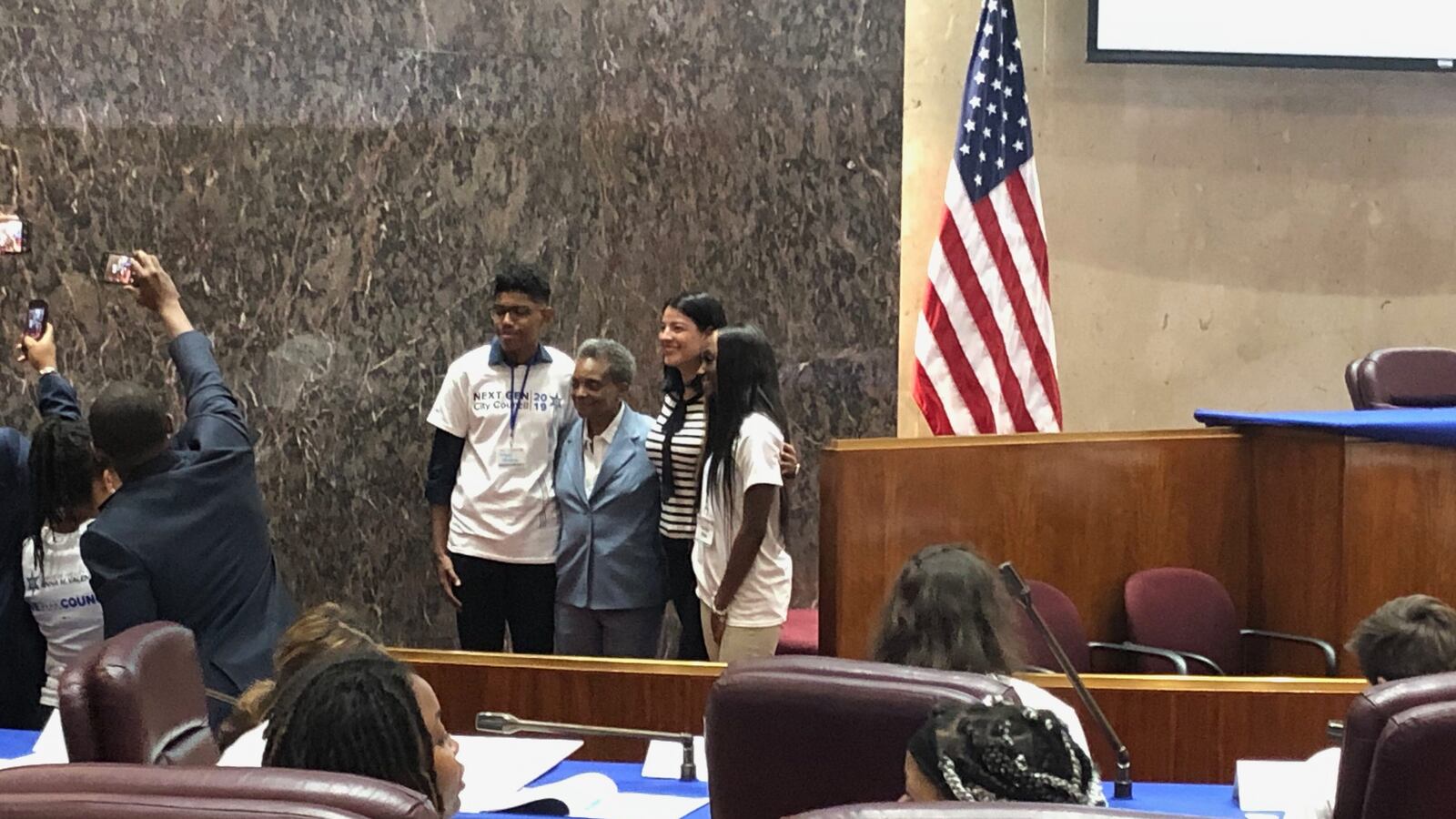On Thursday, Chicago Mayor Lori Lightfoot stepped up to the Chicago City Council podium for the first time. Her audience wasn’t the city’s aldermen, but rather 50 Chicago Public Schools students representing some of the very schools she pledged during her campaign to revitalize.
The students, who were participating in a mock government day, represented 10 neighborhood high schools that sometimes struggle to attract students drawn by the city’s rigorous selective-enrollment schools. Students spent the day writing and debating ordinances covering such of-the-moment topics as culturally-relevant curriculum and better training for the police who staff their schools.
Midway through the votes, Lightfoot arrived, surprising the students, many of whom quickly whipped out their mobile phones to snap close-ups of the first black woman to lead Chicago.
“You probably conducted more business efficiently than maybe we have in a long time in City Council,” she said, squeezing in a humorous jab at the often contentious elected body. “So we’ll follow your lead, to make sure we’re actually getting things done for the people.”
“In all seriousness,” she continued, “It’s really important for you all to understand how government functions, how it doesn’t, what the complications are, but most importantly — that you learn and that you’re civically engaged. There are a lot of great and interesting things happening all over the city. But the area we want to focus on is that the work we’re doing benefits you — the next generation of leaders in the city.”
Lightfoot said in her inaugural speech Monday that education is one of four pillars she wants to focus on, along with public safety, fiscal stability, and rebuilding trust in government.
One of the students listening to her remarks in the council chambers Thursday was Samuel McClendon, 15, a freshman at South Shore International College Prep.
McClendon dreams of becoming a fashion designer, not a politico, but he said he felt inspired by Lightfoot, appreciated the opportunity to see her in action, and wanted to extend an invitation for her to visit his school on the city’s Far South Side.
Asked what he would he tell her, he had a ready answer: He doesn’t want the a vacant high school campus nearby to be converted into a police and fire training facility, a potential deal that surfaced this spring under former Mayor Rahm Emanuel and quickly met controversy.
“It would be really helpful if she could help change that,” McClendon said, “so we could use our old building for after-school programs, for sports. We don’t want it to be used for a police academy. We want it to be used for us.”
During her campaign for mayor, Lightfoot suggested placing police training centers in vacant schools — an idea that was widely panned on social media. It was a low point in an otherwise ebullient campaign.
The mock government event, now in its second year, is part of a broader district and statewide push for stronger civics education. Chicago has rolled out its own civics curriculum, dubbed Participate, and City Clerk Anna Valencia said she is working closely with schools to develop a real-world experience that connects what students are learning in classrooms to what happens in government. Besides the mock City Council day, she visits several high schools and speaks to classes.
“I tell students all the time, it’s great to protest. We need that. But if you can get inside government, you can really change things.”


